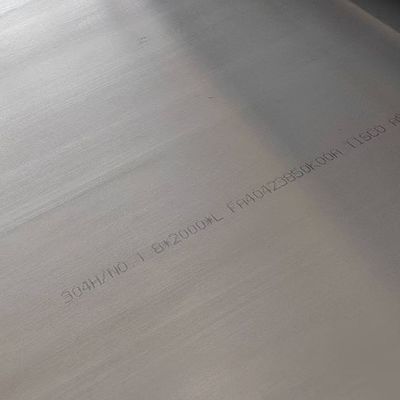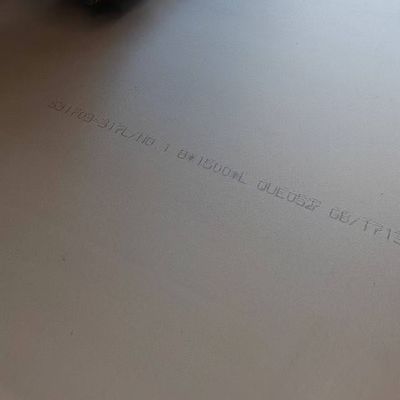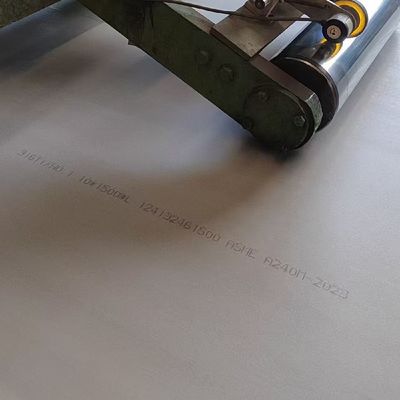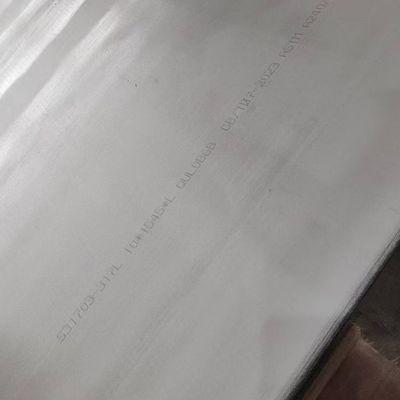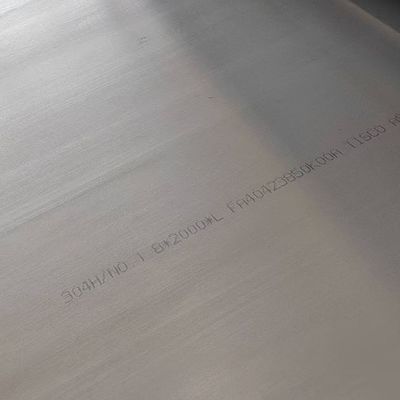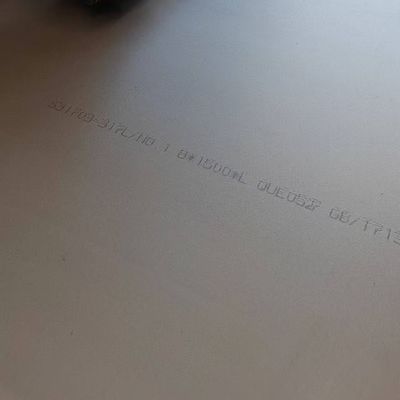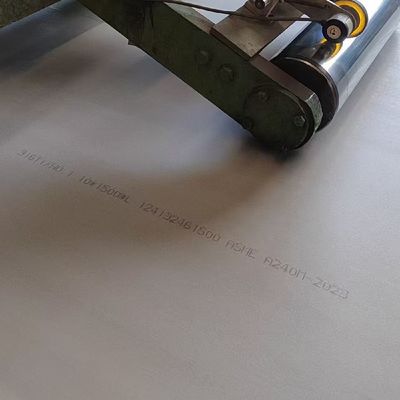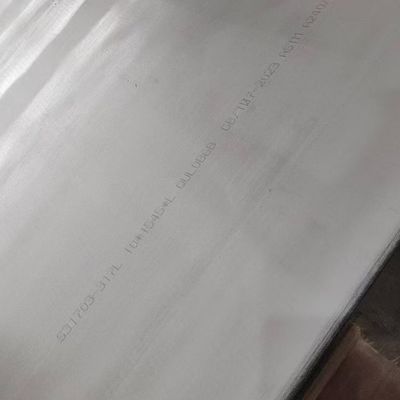316H Stainless Steel Plates: Engineering Excellence for Extreme Environments
316H stainless steel plates represent a specialized subset of austenitic stainless steels, designed to thrive in applications where high temperatures, corrosive chemicals, and structural integrity converge. Unlike generic stainless steel plates, 316H plates are tailored with a unique chemical composition that amplifies both high-temperature strength and corrosion resistance, making them indispensable in industries ranging from petrochemicals to power generation. This detailed overview explores their composition, manufacturing nuances, performance attributes, and real-world applications, highlighting what sets them apart from standard 316 plates and other alloys.
At the core of 316H plates’ durability is their precise alloy makeup, which builds on the proven chemistry of 316 but with a critical modification: carbon content. While standard 316 stainless steel limits carbon to 0.08% maximum, 316H increases this range to 0.04–0.10%. This intentional boost serves a vital purpose: carbon strengthens the material’s grain boundaries, preventing creep (slow, permanent deformation under sustained stress) when exposed to high temperatures— a common failure mode in industrial equipment operating above 600°C (1112°F).
Beyond carbon, 316H plates retain the alloying elements that make 316 a staple in corrosive environments:
- Chromium (16.0–18.0%): Forms a passive oxide layer on the plate’s surface, shielding it from oxidation and general corrosion. This layer self-heals if scratched, ensuring long-term protection.
- Nickel (10.0–14.0%): Stabilizes the austenitic crystal structure, which grants 316H its exceptional ductility and toughness, even at low temperatures. This property is crucial for forming plates into complex shapes without cracking.
- Molybdenum (2.0–3.0%): A defining element that elevates 316H above chromium-nickel steels like 304. Molybdenum enhances resistance to pitting and crevice corrosion, particularly in chloride-rich environments—think seawater, brines, or chemical processing fluids.
- Trace elements, including manganese (2.0% max), silicon (0.75% max), and phosphorus (0.045% max), further refine mechanical properties, balancing formability with strength.
316H stainless steel plates are produced through a rigorous process to ensure uniformity and performance. The journey begins with melting high-purity raw materials in electric arc furnaces, followed by refining to remove impurities like sulfur and oxygen. Once the alloy reaches the desired composition, it undergoes hot rolling—passing through rollers at temperatures exceeding 1100°C (2012°F)—to form plates of varying thicknesses, typically ranging from 1.5mm to 150mm, though custom sizes are available for specialized projects.
Cold rolling may be employed for thinner plates (below 3mm) to achieve tighter dimensional tolerances and a smoother surface finish, critical for applications where hygiene or fluid flow efficiency matters, such as in food processing or pharmaceutical equipment. Post-rolling, plates undergo annealing—a heat treatment process where they are heated to 1050–1150°C (1922–2102°F) and rapidly cooled—to restore ductility and dissolve any harmful precipitates that could weaken the material.
What distinguishes 316H plate manufacturing from standard 316 is the strict control over carbon distribution. During annealing, precise temperature regulation ensures carbon remains evenly dispersed within the austenitic matrix, avoiding grain boundary carbide precipitation that could compromise corrosion resistance. This attention to detail makes 316H plates particularly reliable in welded structures, where heat-affected zones (HAZs) are prone to weakness.
316H plates excel in mechanical properties that matter for structural applications. Their minimum tensile strength of 515 MPa and yield strength of 205 MPa ensure they can withstand heavy loads, while an elongation of 40% (minimum) allows for bending, forming, and fabrication without fracturing. This combination of strength and ductility makes them suitable for everything from pressure vessels to structural supports in offshore platforms.
Where 316H plates truly stand out, however, is in their thermal performance. Unlike standard 316, which may exhibit creep at temperatures above 650°C (1202°F), 316H plates maintain structural integrity up to 800°C (1472°F). Creep resistance is critical in applications like boiler tubes, furnace liners, and turbine components, where materials are subjected to constant stress at high temperatures over years of operation. Tests show that 316H plates experience less than 0.1% creep deformation after 10,000 hours at 700°C (1292°F) under a stress of 100 MPa—far outperforming many other austenitic steels.
Thermal conductivity is another key attribute: 316H plates conduct heat at a rate of 16.2 W/(m·K) at 100°C (212°F), making them effective in heat exchangers where controlled thermal transfer is essential. They also exhibit low thermal expansion (16.0 × 10⁻⁶/°C between 0–100°C), reducing the risk of warping or cracking when exposed to rapid temperature fluctuations—a common challenge in industrial furnaces.
Corrosion resistance is the cornerstone of 316H plates’ appeal, especially in aggressive environments. Their molybdenum content makes them highly resistant to chloride-induced pitting—a form of localized corrosion that can cause sudden failure in unprotected metals. In salt spray tests, 316H plates show no signs of pitting after 5,000 hours of exposure, compared to 304 plates, which may exhibit pitting within 1,000 hours. This makes them ideal for marine applications, such as ship hulls, propeller shafts, and coastal infrastructure, where seawater immersion is constant.
They also resist corrosion in acidic and alkaline environments. In sulfuric acid solutions (up to 5% concentration at 60°C/140°F), 316H plates corrode at a rate of less than 0.1 mm/year—slow enough to ensure decades of service in chemical processing tanks and pipelines. Similarly, in caustic soda (sodium hydroxide) solutions, they outperform carbon steels, which corrode rapidly, and even some nickel alloys, which can become brittle under prolonged exposure.
A unique advantage of 316H plates is their resistance to intergranular corrosion (IGC), a type of degradation that attacks grain boundaries. Thanks to their controlled carbon content and annealing process, they pass the ASTM A262 Practice E test—a rigorous standard for evaluating IGC resistance—making them safe for use in high-purity applications like pharmaceutical reactors and food processing equipment, where metal contamination could compromise product quality.
316H stainless steel plates are the material of choice in industries where failure is not an option. In the petrochemical sector, they line reactor vessels and transfer pipelines handling crude oil, natural gas, and corrosive byproducts. Their ability to withstand high pressures (up to 10,000 psi) and temperatures (600–800°C) makes them indispensable in hydrocracking units, where heavy hydrocarbons are broken down into lighter fuels.
In power generation, 316H plates form the heat exchanger tubes and boiler panels of coal-fired, gas-fired, and nuclear power plants. Here, they endure continuous exposure to superheated steam (up to 550°C/1022°F) and combustion byproducts, including sulfur dioxide, without succumbing to corrosion or creep.
The marine industry relies on 316H plates for offshore platforms, where they resist saltwater, wave impact, and biofouling. They are also used in desalination plants, where seawater is converted to freshwater—an environment rich in chlorides that would quickly degrade lesser materials.
Other applications include aerospace components (jet engine exhaust liners), industrial furnaces (retorts and heating elements), and pollution control equipment (scrubbers that remove acidic gases from industrial emissions). In each case, 316H plates deliver a rare combination of strength, longevity, and reliability that reduces maintenance costs and extends equipment lifespans.




 Raian IonescuMaterial quality very good. we have cooperate more than 10 Years. They trade lots kinds of steel material. All material quality good. They duty for all material quality. We are planing continue cooperate with them in the future
Raian IonescuMaterial quality very good. we have cooperate more than 10 Years. They trade lots kinds of steel material. All material quality good. They duty for all material quality. We are planing continue cooperate with them in the future
![]()
![]()
![]()
![]()



